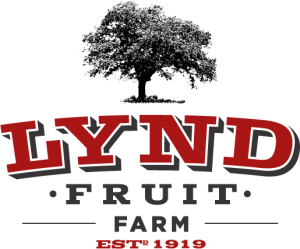Timeline
Fourth generation apple farmer, Alton Tecumseh Lynd moved his wife Vesta & 6 sons (youngest was Arnold, age 2) from South Point Ohio and purchased an 80 acre orchard when his wife Vesta convinced him if they sold their South Point, OH orchard and bought the one in Licking County, they could improve their apple marketing opportunities in the booming Columbus market. Not only could the business grow, but she could join her sister on shopping expeditions to Lazarus, Columbus’ new department store where they sold dresses from Paris!
3 of Altons sons (Ed, Alvin & Arnold) stayed on the farm and another 80 acres of adjacent farmland was purchased and by the late 40’s 6 acquisitions brought the total farm acreage to 380 acre.
A 40 acre orchard, complete with gas station on U.S. Rt. 40 (Etna, OH) was purchased. The orchard was old and trees were huge, planted 40 ft. apart (just 27 trees/acre). We tore down the gas station and built a state of the art market at our new Etna farm. Farmers and other businessmen traveled from out of state to see this new concept of an open-air farm market with walk in coolers. Well known folks such as Andy Williams stopped for the fresh produce.
6th generation and son of Arnold Lynd, Mitch Lynd got the idea of opening the orchard to the public to pick after observing friends from the city enjoying picking their own apples. He called it Pick Your Own Apples! He arranged to borrow ‘people haulers’ from the Ohio State Fair to take folks out into the orchard. After a number of years the crowd outgrew the ability for the wagons to keep up and Mitch decided to allow customers to drive their cars out into the orchard. To this day, folks still drive out into the orchard to pick their own apples.
Interstate 70 opened and market business declined. Over the years the family added a lot of additional products to the market. Roasted peanuts, a bakery, a soft serve ice cream hut, meat and cheese counter, and mountains of melons in the parking lot where the 7th generation often sampled the melons. Perhaps what we were most remembered for is the ALL YOU CAN DRINK FOR A DIME flavored ciders that lined the front of the market! To this day it’s what folks most often recall.
A hard hitting freeze killed nearly the entire crop. Not even cider apples could be harvested. What should have been a 150,000 bushel crop turned out to be 2,000 bushels. The family knew we needed to become more diversified with regards to a second location.
Despite efforts to keep the market going, the introduction of the supermarket became too much for the family to overcome and we sold the market.
We purchased a 200 acre farm on Sportsman Club Rd., Johnstown, OH, the highest point in Licking County where there would be more protection from spring freezes. This farm was later named Lynd’s Blue Frog Farm, named after the blue bullfrog that lived in the pond one hot summer.
Mitch Lynd identifies the need for apples more suited for Midwest growers that would have a longer storage life, better taste and more desirable texture. He co-founded the Midwest Apple Improvement Assn. which is now over 500 members strong and has patents on Evercrisp, Ludacrisp, Bakers Delight, Rosalee and Crunch A Bunch. Mitch has since technically retired from the board of directors, but continues to conduct testing and crossing apples at his home on the Blue Frog Farm.
Lester Lynd sells homegrown peaches off a hay wagon near the Morse Rd./Rt. 310 intersection. Over the next few years the hay wagon turned into 2 wagons which led to a tent, and eventually a super sized tent where we sold peaches, sweet corn, apples, cider, jams & jellies. We built the existing market at intersection of st. Rt. 310 & Morse Rd. enabling us to get out of the wholesale apple business and rely more on retail and U-Pick.
Opened Blue Frog Farm to the public for U-Pick raspberries, blackberries and eventually cherries and peaches, too!
Introduced the tall trellis system at Blue Frog Farm. This high density planting allows us to plant nearly 1000 trees per acre.
